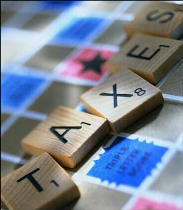 | « Back to article | Print this article |
While most non-cash gifts are taxable, How the I-T department values them is the tricky part.
 In the last few years, the ambit of taxation for gifts received by a person has been widened .
In the last few years, the ambit of taxation for gifts received by a person has been widened .
Now, it covers several non-cash items. This now includes land and buildings, shares and securities, jewellery, drawings, paintings, sculptures and other works of art. Considering the nature of all these items, there is a need to value these items in a specific manner.
The details for the manner in which several of these items has to be valued has now been released by the tax department.
OVERALL TAXATION
Since October 1, 2009, a gift of property which covers several non-cash items is taxable in the hands of the individual when the sum of this exceeds Rs 50,000. A gift received from a relative or at the time of marriage or under a will or inheritance is not taxable.
The detail for the valuation of immovable property was given earlier and it was mentioned that for the remaining non-cash items, a method would be prescribed for arriving at the Fair Market Value. This has now been announced. While the route suggested is not complicated, it is likely that a valuation report would be required in many cases.
JEWELLERY
When there is a gift of jewellery, the first step is to arrive at the FMV. This will be the price fetched if the jewellery is sold in the open market on the date the gift is received.
Getting such a value might be difficult for the individual taxpayer and they can get a report of the registered valuer about the price this would fetch in the open market on the date received. This report will be useful when the value becomes taxable and exceeds the Rs 50,000 limit. The next thing is to know who is a registered valuer: these are given this status under the Wealth Tax Rules.
There are different conditions under which jewellery is gifted and one of these involves a case where this is purchased from the market and then gifted. The valuation here is the simplest, as the invoice value for the purchase will be determined as the FMV.
ART WORKS
The situation in case of drawings, paintings, archaeological collections, sculptures or any work of art is similar to that of jewellery, where the FMV will be considered to be the price this would fetch if sold in the open market on the date of the receipt.
Again, a report from a valuer could be obtained, especially when the value of the gift exceeds Rs 50,000. This will list out the value of the item that will be fetched if sold in the open market on the day of the gift and, hence, this will determine the value to be considered by the taxpayer.
If these items are purchased from the market and then this is gifted to the individual, the invoice value of the purchase will become the value that will be considered for the purpose of the gift.
SHARES
There are two variations of shares that can be gifted. One would be where the shares are listed and the other is where the shares will be unlisted.
In case of listed shares or securities, the calculation is simple. If these were gifted through a transaction on the stock exchange, the price at which the transaction took place would be considered the FMV.
In case the listed shares or securities are not transacted or transferred through the stock exchange, then the lowest price of the shares or securities on the stock exchange on the date of the receipt will be considered.
So, if Reliance shares are gifted through an off-market transaction and the lowest price for that day is Rs 1,050, then the value of 100 shares would be Rs 1,05,000. In case the day of the gift was not a trading day, then the lowest value on the preceding day would be considered.
If the shares are unlisted equity shares, then there will have to a working required. This will include reducing the book value of the liabilities from the book value of the assets, divided by the paid-up equity share capital in the balance sheet and multiplied by the paid-up value on the shares to arrive at the fair value. This working will give the book value per share of the company and this will be used for the valuation.
If there are unquoted shares or securities other than equity shares, such as preference shares or some other security, then the value of this item will be calculated as the price this would face if sold in the open market on the date of the gift. To arrive at the value, the taxpayer can use the report of the merchant banker or an accountant for this purpose.
The writer is a certified financial planner